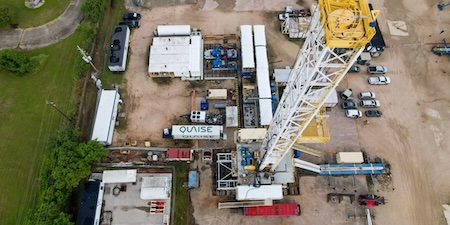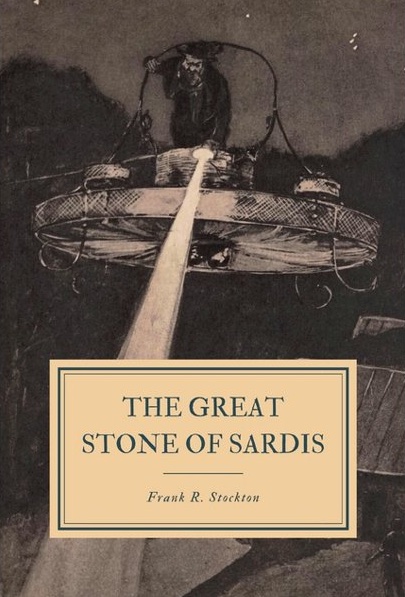Science Fiction
Dictionary
A B C D E F G H I J K L M N O P Q R S T U V W X Y Z
Quaise Uses Beams Of Energy To Dig Geothermal Wells

Exotic Quaise drills deep into the earth with beams of light.

(Quase Drills With Beams of Light)
The company is building an exploration well this year and plans to begin drilling production wells (those that can eventually be used to generate electricity) in 2026. That pilot project will reach about 20 megawatts of power with the first few wells, operating on rock that’s around 350 °C. The company plans to have it operational as early as 2028.Quaise’s strategy with the Oregon project is to show that it can use super-hot rocks to produce geothermal power efficiently, says CEO Carlos Araque. After it fires up the plant and begins producing electricity, the company can go back in and deepen the holes with millimeter-wave drilling in the future, he adds.
This amazing technical feat reminds me why I often will add something to my database that seems patently impossible, or just too science-fictional to ever become real.
In 1897, science fiction writer Frank Stockton wrote The Great Stone of Sardis, in which he described a method for drilling deep into the earth using a penetrating ray:
The Artesian ray, of which these two spoke, was an invention upon which Roland Clewe had been experimenting for a long time, and which was and had been the object of his labors and studies while in Europe. In the first decade of the century it had been generally supposed that the X ray, or cathode ray, had been developed and applied to the utmost extent of its capability. It was used in surgery and in mechanical arts, and in many varieties of scientific operations, but no considerable advance in its line of application had been recognized for a quarter of a century. But Roland Clewe had come to believe in the existence of a photic force, somewhat similar to the cathode ray, but of infinitely greater significance and importance to the searcher after physical truth. Simply described, his discovery was a powerful ray produced by a new combination of electric lights, which would penetrate down into the earth, passing through all substances which it met in its way, and illuminating and disclosing everything through which it passed.
(The photic borer from 'The Great Stone of Sardis' by Frank Stockton)After making many minor trials of the force and powers of his light, Roland Clewe had undertaken the construction of a massive apparatus, by which he believed a ray could be generated which, little by little, perhaps foot by foot, would penetrate into the earth and light up everything between the farthest point it had attained and the lenses of his machine. That is to say, he hoped to produce a long hole of light about three feet in diameter and as deep as it was possible to make it descend, in which he could see all the various strata and deposits of which the earth is composed. How far he could send down this piercing cylinder of light he did not allow himself to consider...
(Read more about the Photic Borer (Artesian Ray))
Scroll down for more stories in the same category. (Story submitted 7/1/2025)
Follow this kind of news @Technovelgy.| Email | RSS | Blog It | Stumble | del.icio.us | Digg | Reddit |
Would
you like to contribute a story tip?
It's easy:
Get the URL of the story, and the related sf author, and add
it here.
Comment/Join discussion ( 0 )
Related News Stories - (" Engineering ")
Time Crystals Can Now Be Seen Directly
'It is as you thought when you constructed the time crystal, my master Vaylan.' - NK Heming, 1952.
China Steals Strato Airship Design From Google App Engine
'...war-balloons, or, as it would be more correct to call them, navigable aerostats.' - George Griffith, 1893.
Biohybrid Jellyfish Explore The Ocean
As predicted, and detailed, by science fiction writers!
3D-Printed Exoskeleton Learns From Your Hand
'...small electric motors at the principal joints worked the prosthetic framework by means of steel cables...' - Fritz Leiber, 1968
Technovelgy (that's tech-novel-gee!) is devoted to the creative science inventions and ideas of sf authors. Look for the Invention Category that interests you, the Glossary, the Invention Timeline, or see what's New.
Science Fiction
Timeline
1600-1899
1900-1939
1940's 1950's
1960's 1970's
1980's 1990's
2000's 2010's
Current News
Will AIs Give Better Results If You're Rude To Them?
'I said, "Listen up, motherf*cker.'
Cybertruck Robotic Arm F10 Drone Launch!
Drone away!
Black Fungus Blocks Radiation
'You were surrounded by Astrophage most of the time'
Liuzhi Process Now In Use In China
'He was in a high-ceilinged windowless cell with walls of glittering white porcelain.'
Reflect Orbital Offers 'Sunlight on Demand' And Light Pollution
'I don't have to tell you about the seven two-mile-diameter orbital mirrors...'
Will Robots Become Family Caregivers?
'The robant and the tiny old woman entered the control room slowly...'
Chinese Tokamak Uses AI To Keep Fusion Plasma Stable
'Guy named Otto Octavius winds up with eight limbs... What are the odds?'
Time Crystals Can Now Be Seen Directly
'It is as you thought when you constructed the time crystal, my master Vaylan.'
RoboBallet The Dance Of Cooperative Robots
'...an integrated seven-unit robot team.'
Chrysalis Generation Ship to Alpha Centauri
'This was their world, their planet —
this swift-traveling, yet seemingly moveless vessel.'
Alexa+ And Its AI Brain Improvements
'What's it do?' he asked. 'It amuses.'
Does CloneRobotics Offer A True Android?
Is this What Little Girls Are Made Of?
Brain Implant Is Able To Capture Your Inner Dialogue
'So you see, you can hide nothing from me.'
Are AIs Going Rogue Like Hal 9000
'I know that you and Frank were planning to disconnect me...'
Animated Tumblebugs On Astounding Cover!
'Gaines and Harvey mounted tumblebugs, and kept abreast of the Cadet Captain...'
LingYuan Vehicle Roof Drones Now Available, ala Blade Runner 2049
Accompanied by a small selection of similar ideas from science fiction.

